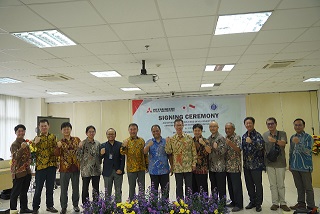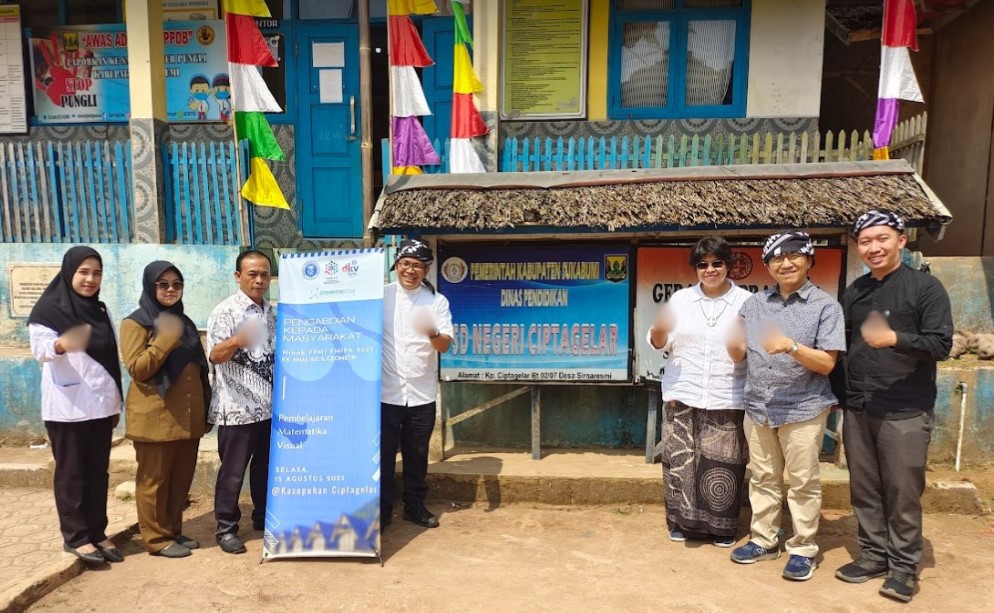ITB-MHI Collaboration to Develop Environmentally Friendly Gas Turbine
By Anggun Nindita
Editor Anggun Nindita

BANDUNG-itb.ac.id - Institut Teknologi Bandung (ITB), through ITB LPPM, signed a collaboration with Mitsubishi Heavy Industries, Ltd. (MHI) at the ITB-MHI Research and Development Agreement Signing Ceremony. This event was held offline at the Conference Hall of the Center for Research and Community Services Building. ITB and MHI's board of directors, as well as a number of students, attended the ceremony.
This collaboration between ITB and MHI aimed to develop an ammonia-fueled gas turbine for electricity generation. The collaboration was a direct follow-up to a MoU (memorandum of understanding) that had been signed in February 2022. In the said MoU, both ITB and MHI agreed to develop such a technology in an effort to reduce carbon dioxide emissions.
The signing was done by Masanori Yuri, MHI's Senior Vice President for GTCC Business Division of Energy Systems, and Prof. Ir. I Gede Wenten, M.Sc., Ph.D., ITB's Vice-Rector for Research and Innovation.
Prof. Ir. Gede Wenten revealed that the collaboration had already begun in 2022 and was continuing in 2023. This energy transition involved many modern technologies to generate, store, and distribute new and renewable energy. The expected outcome was that the energy produced would be environmentally sound. "ITB has the expertise and equipment for energy transition, so we are ready to make this collaboration a success."
Meanwhile, the Head of ITB LPPM, Dr. Yuli, kindly accepted and supported the collaboration between the two parties. According to him, this collaboration should be taken as an example for foreign countries if they want to do business in Indonesia. "This isn't only about technological exchange but also reciprocity that boost Indonesia's human resources by jointly developing new technologies," he stated.
The main goal of this collaboration was to utilize ammonia in power plants so that the use of carbon-based fuels could be minimized. This is because the combustion of ammonia (NH3) does not produce any carbon dioxide (CO2), so it is considered environmentally friendly.

Ammonia is known to contain hydrogen, which is generally produced from fossil fuels. One of the goals of the ITB-MHI collaboration was to produce hydrogen using renewable energy from, for instance, wind power plants and solar power plants. This renewable energy was to be processed first by MHI's technology to create the said hydrogen. Next, the hydrogen was further processed to become ammonia, which was used to power the gas turbine.
Research had already started in 2023 specifically to design a combustion chamber for a NH3+H2+N2 combustion test made by ITB. Test runs were then conducted on the system. Computational fluid dynamics (CFD) was also employed to model the hydrogen-ammonia fuel combustion.
Masanori Yuri hoped that the collaboration would expand and incentivize the implementation of green energy in Indonesia. Moreover, this collaboration was also hoped to greatly improve Indonesia and ITB's human resources, as well as promote technological advancements between Japan and Indonesia.
Reporter: Pravito Septadenova Dwi Ananta (Geological Engineering ‘19)
Translator: Ariq Ramadhan Teruna (Chemical Engineering ‘21)

.jpg)
.jpg)
.jpg)
.jpg)
.jpg)



